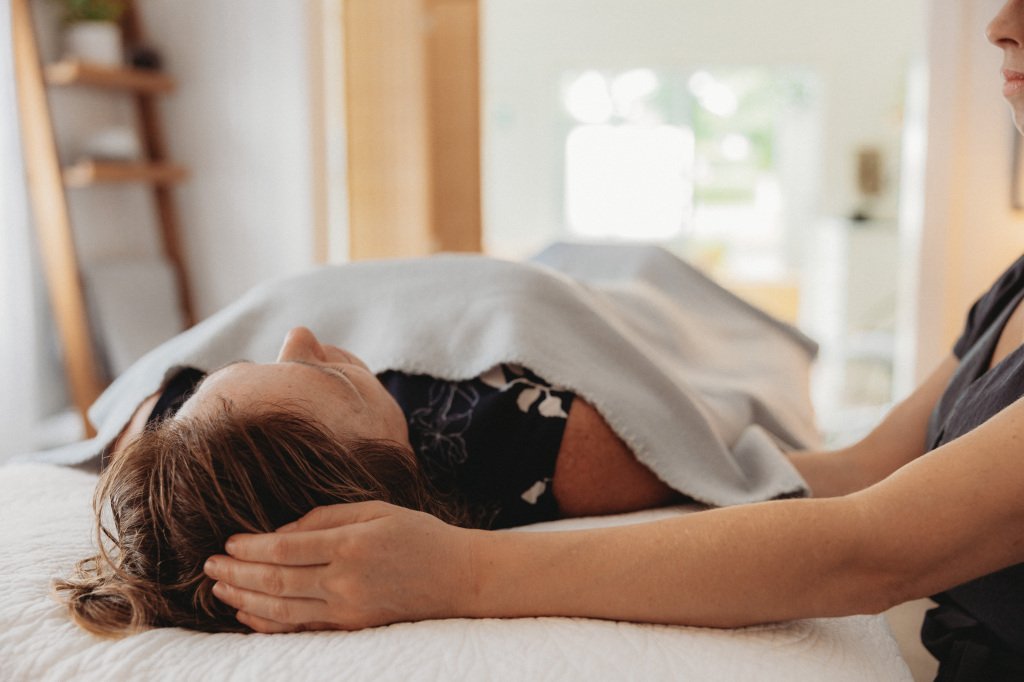
PROCESSAbout Your Treatment
'The quieter you become, the more you are able to hear' - Rumi
During Your Treatment
You will lie fully clothed on a massage table, usually on your back, or in a position that is comfortable for you.
The therapist will then apply a therapeutic touch to particular areas of your Craniosacral System that need attention, using specific gentle 'holds'. The most common holds are to the cranium (head) and the sacrum (lowest section of the back) which are the top and the bottom of the spine and nervous system.
Belinda is adept at discerning the subtle rhythms and vibrations of the body through these gentle holds, which can give information on the state of health within the different structures of the body.
Between the cranium and the sacrum runs our spinal cord (encasing our nervous system), which, along with the spine and associated muscles, form the foundation of our muscular-skeletal structure. This is where Craniosacral Therapy gets its name.
Therapeutic touch which calms the nervous system can gently encourage many improvements throughout the whole mind-body. Clients often notice releases in tissues, bone structure, muscles and nerves which lead to pain relief and often a long-term improvement in the body's structure and general health.
It is common to become deeply relaxed during a Craniosacral Therapy session, and often people sleep better in the interim after treatment.
A series of treatments is recommended for best results.
Craniosacral Therapy for Children and Babies
Craniosacral Therapy can be very effective for unsettled babies, those who may have recurring ear infections, digestive problems, sleeping problems, feeding issues or problems related to difficult births.
Plagiocephaly (misshapen head after birth) and Torticollis (unable to turn head fully to both sides or one side preference) can also respond positively to CST.
Many more children are experiencing anxiety today than ever before, and it is the most common issue I treat in children. Fortunately, I have seen how CST can help many children and teens to learn how to manage their anxiety and in particular, how to breathe well to lessen their symptoms.
Contrary to what you may think, children do not need to stay lying still for a Craniosacral treatment. We all know that toddlers especially do not like to stay put!
During the session, the therapist will work around the child to make the environment safe, calming and inclusive.
Babies can lie on the therapy table, stay sleeping in their car seat, or be held by their caregiver.
Toddlers can move around, play, and interact with the therapist and caregiver/s.
Younger children may want to read a book or do a puzzle, while older children and teens can rest on the bed while reading or listening to music if they find it easier to relax that way.
For some further information on Craniosacral Therapy for children click here
CST can help babies with:
Breastfeeding difficulties
Caesarean births
Baby colic
Constipation
Difficult birth experiences
Baby digestive issues - wind, constipation, discomfort
Excessive crying
Head shape irregularity (Plagiocephaly)
Premature birth
Reflux
Sleep issues
Torticollis (head to one side)
Unsettled babies
Very short or very long labours
CST can help children with:
Anxiety
Bed-wetting
Children's behavioural issues
Concentration
Confidence issues
Digestive system issues
Difficult experiences
Ear infections
Growing pains
Headaches
Immune support during medical treatment
Injury recovery
Nervousness
Recovery after surgery
Sleeping problems
Sore tummies
Traumatic experiences




